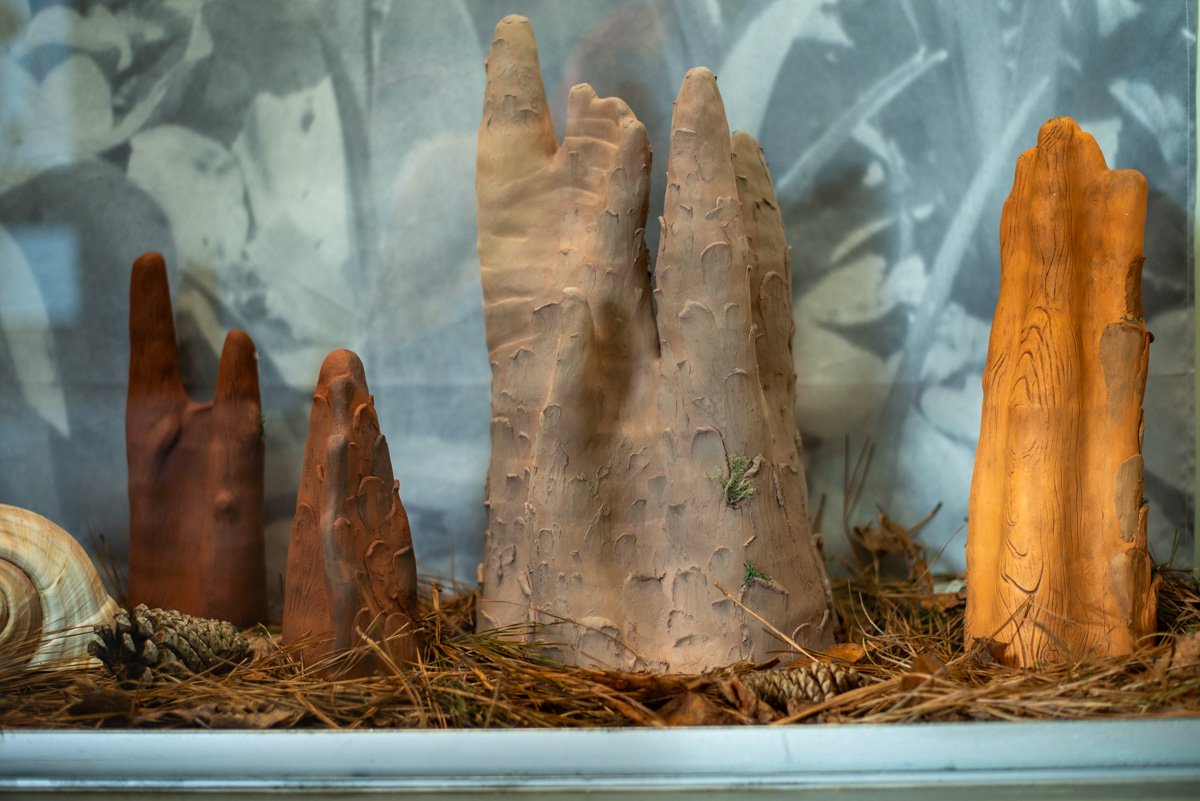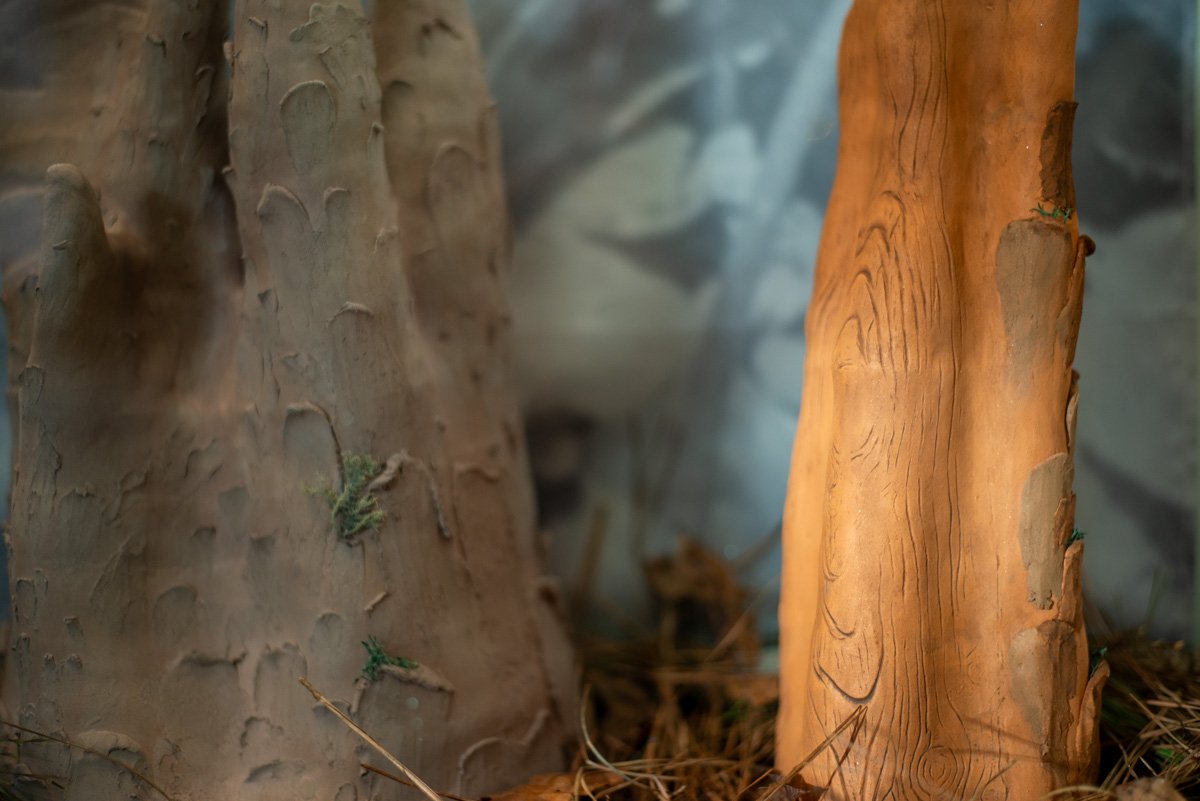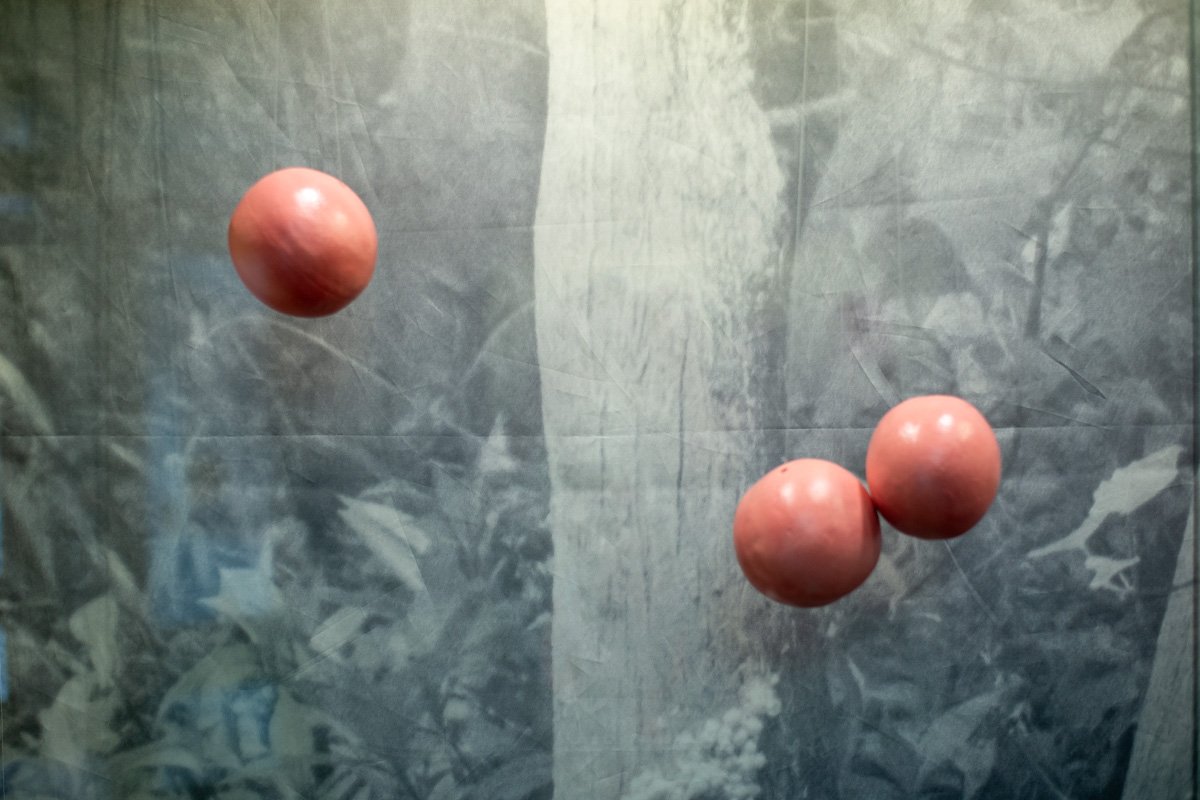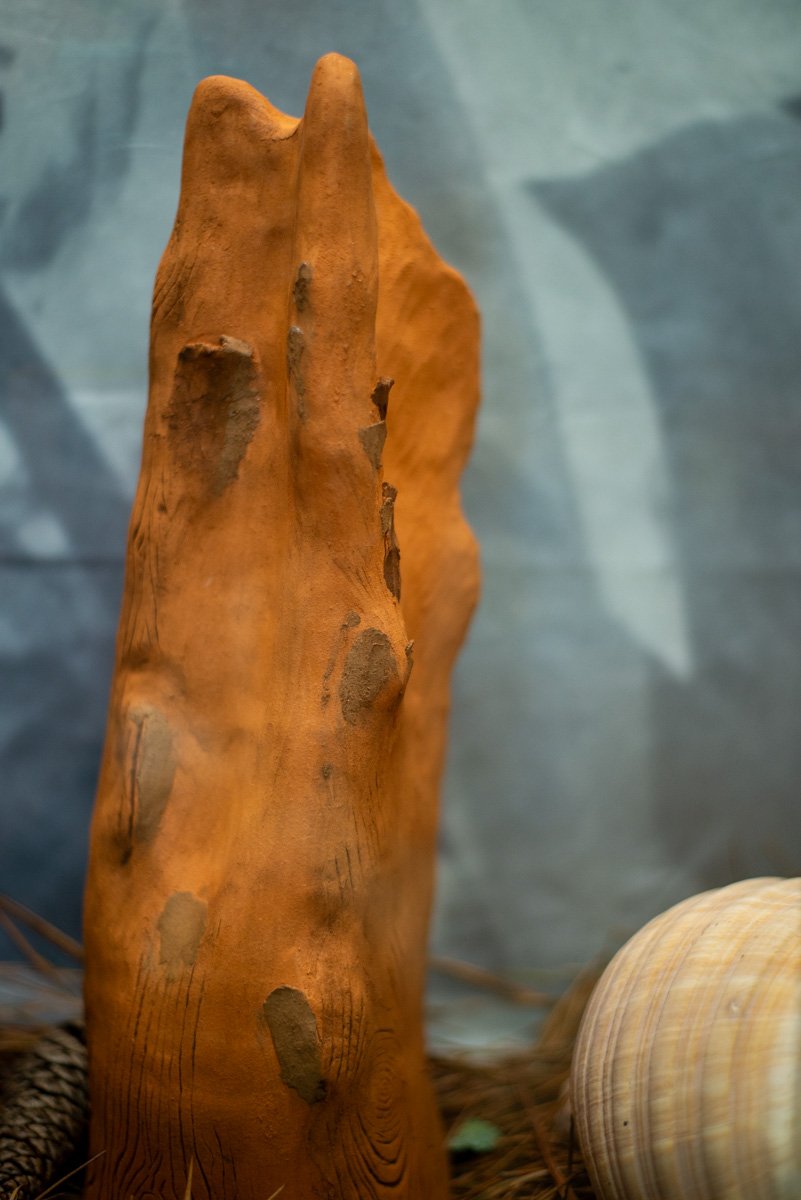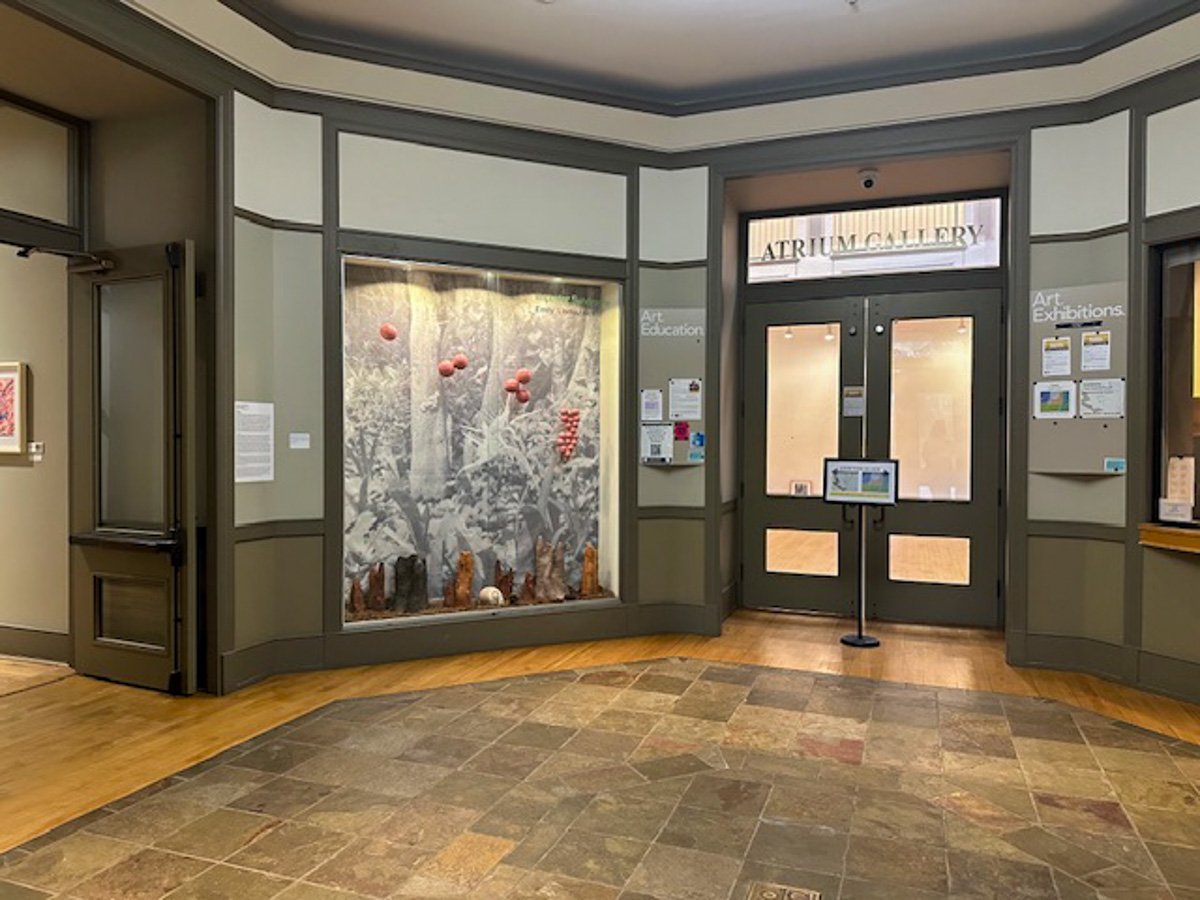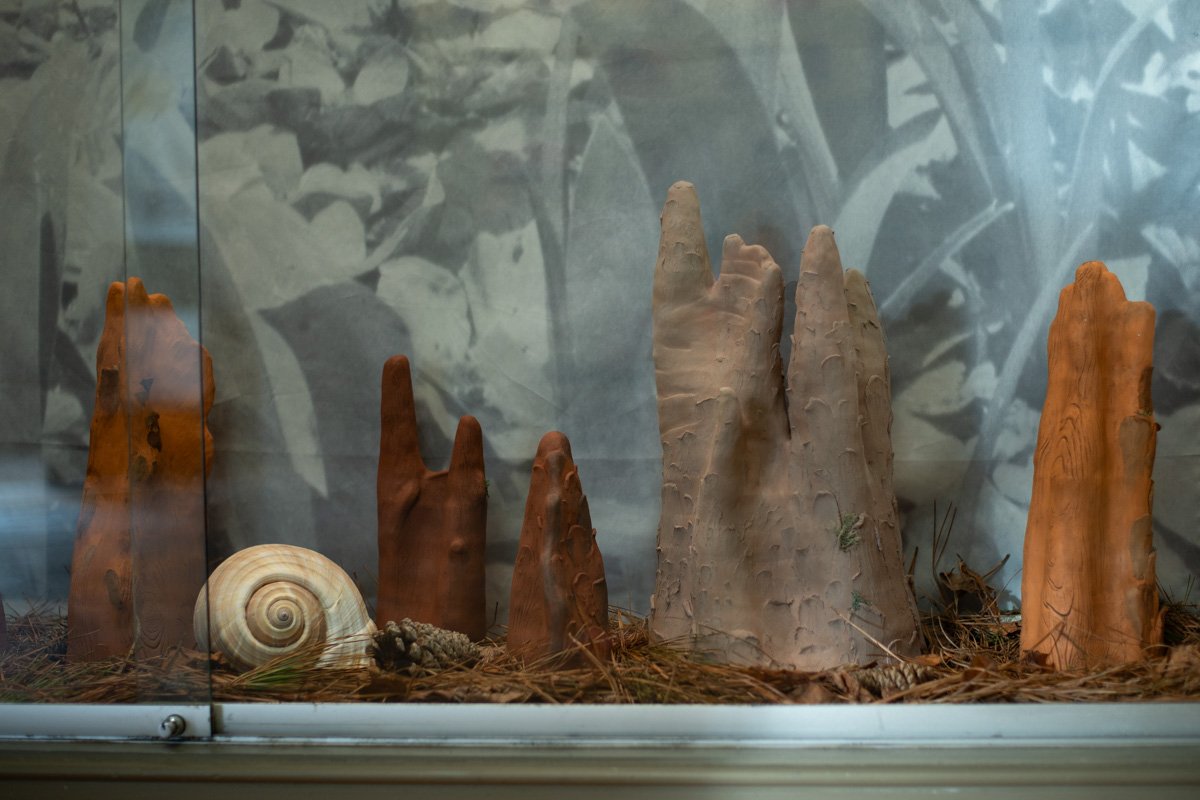
glazed stoneware, gouache, dye sublimation print on cotton, pine straw, oak moss, pine cones.
72 x 87 x 12 inches.
Imposter Syndrome
February 14 - April 25, 2025
Lyndon House Arts Center, Athens, GA
The Spring
The Ichetucknee River is a spring-fed, pristine river in North Central Florida. At just 6 miles long, it produces more than 200 million gallons of fresh water every day from a group of nine underground limestone aquifers. As a protected state park it is home to an abundance of wildlife including: the river otter, beaver, turtle, stork, egret, heron, snail, belted kingfisher, bluegill, largemouth bass, alligator gar, catfish and manatees. This ecosystem includes 15 distinct natural communities—from flatwoods to hammock, sandhills to sinkholes, upland hardwoods, streams and caves. Vegetation consists of longleaf pines, spiky saw palmetto, live oak, turkey oak, pignut hickory, magnolia, sweetgum and maples. Water-loving cypress, swamp tupelo, and cabbage palm hug the half-mile floodplain forest along the river bed. Depicted in the scene in front of you, a pair of distinct white spider lilies bloom among sawgrass and the broader strap-leaf sagittaria at the water’s edge. Behind them loom cypress trunks and their “knees”, many of which dot the foreground of this scene as well.
The Snail
Just above the water line, hugging the base of a cypress tree, you can spot snail eggs formed together in a cluster known as the mucus matrix. Enlarged replicas suspended in the foreground, these pink eggs belong to the Florida Apple Snail, a species native to the region—not to be confused with the invasive Island Apple Snail from South America. Sinister in its mimicry of native species and known for an insatiable need to feed, the Island Apple Snail is listed as one of the 100 Worst Invasive Species in the World due to its overconsumption of wetland vegetation. The Island Apple Snail matures faster, lays thousands of eggs in a single cluster and has very few natural predators making it a significant threat to the Florida Apple Snail and its habitat. You can identify the mucus matrix of a Florida Apple Snail by its larger, pinker eggs of which it lays only 20 - 80 at one time. From March - October, pink egg clusters dot the sturdy foliage and bases of trees along the Ichetucknee River basin.

